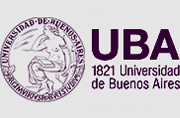OHOW project
One Health One World network for surveillance of foodborne and AMR threats of zoonotic origin
In spite of progress achieved in the last decades to understand the dynamics driving the epidemiology of foodborne zoonoses, the emergence and evolution of its causative agents are still a major public health concern worldwide. The epidemiology of foodborne diseases such as Salmonella, Campylobacter or E. coli is particularly challenging given the potential involvement of different hosts and their environment, which can act as potential sources of infection/contamination. Worldwide estimates of the impact in public health caused by infections with zoonotic pathogens such as non-typhoidal Salmonella or Campylobacter spp. add up to >100 million cases and >30,000 deaths, although there are large differences depending on the region [i]. The end to the decreasing trend of confirmed human salmonellosis cases reported at the European Union level further exemplifies the difficulties of preventing these diseases in spite of control programs in place in the animal reservoir [ii]. Moreover, and even though a large proportion of foodborne diseases are self-limiting, antimicrobial therapy is necessary for certain invasive infections, and therefore the recent surge of antimicrobial resistant microorganisms further increases the public health importance of foodborne pathogens.
Due to the importance that foodborne pathogens and antimicrobial resistance (AMR) have in both public and animal health, numerous surveillance programs monitoring the situation at different stages of the food chain have been implemented in different countries/regions. These approaches can however vary significantly due to particularities of the production/consumption systems in place in the countries, importance of specific pathogens/syndromes (i.e., hemolytic uremic syndrome in children in Argentina), environmental conditions, resources available, etc. Because of this, different approaches for surveillance and monitoring of foodborne pathogens in humans, animals and food have been adopted in different countries.
In this context, the increasing exchange of foods, animals and people between regions, coupled with the emergence of antimicrobial resistance, has created unprecedented challenges that require new approaches for harmonized surveillance and prevention of foodborne diseases. Thankfully, new tools (such as whole genome sequencing, or big data analytic approaches) are also becoming increasingly available, thus creating opportunities to address those challenges as well.
The OHOW network will connect researchers from 5 universities with experience in detection, surveillance and monitoring of foodborne pathogens and AMR with the overall objective of performing a multidisciplinary assessment of the existing surveillance and monitoring programs in place in different countries of Ibero-America and a gap analysis that may lead to recommendations for improvements in all the stages of the program (from sampling to laboratory and data analysis). The project will be coordinated by the VISAVET Health Surveillance Center at the Universidad Complutense, that has been collaborating with Spanish national (Ministry of Agriculture) and regional (Comunidades Autónomas) authorities in the design and execution of the monitoring programs for foodborne pathogens and antimicrobial resistance since 2003. The team from the Universidad de Barcelona has great expertise in the study of the environment as a reservoir of antimicrobial resistance and the dynamics of AMR transmission. The team from the Centro de Estudios Transdisciplinarios de Epidemiología (CETE) of the Universidad de Buenos Aires includes senior and trained researchers in foodborne zoonotic pathogens, particularly referred to hemolytic uremic syndrome and diarrheic E. coli and monitoring of resistance in collaboration with the Secretary of Health of the Nation. The team from the Universidad Nacional Autónoma de México has great experience in the field of food safety and has developed techniques for the detection and mitigation of the risk posed by foodborne pathogens in the food chain, as well as assessed their epidemiology with a focus on AMR strains. The Universidade de São Paulo team has experience in veterinary epidemiology and, more specifically in the epidemiological characterization and modeling of zoonoses including foodborne agents.
In order to achieve its primary objective, the project will be divided into several specific sub-objectives:
- Sub-objective 1: evaluation of surveillance programs in the animal, human and environmental reservoirs for relevant foodborne pathogens and AMR in Argentina, Brazil, Mexico and Spain
- Sub-objective 2: exchange of expertise in the microbiological, molecular and epidemiological characterization of foodborne pathogens and AMR
- Sub-objective 3: elaboration of recommendations for harmonized monitoring of emerging threats to relevant stakeholders in the four countries involved in the proposal
Each of these sub-objectives will be the focus of a specific activity as described in the Activities section.
References
- Pires SM, Fischer-Walker CL, Lanata CF, Devleesschauwer B, Hall AJ, Kirk MD, et al. Aetiology- Specific Estimates of the Global and Regional Incidence and Mortality of Diarrhoeal Diseases Commonly Transmitted through Food. PloS one. 2015;10(12):e0142927. Epub 2015/12/04.
- EFSA. The European Union summary report on trends and sources of zoonosis, zoonotic agents and food-borne outbreaks in 2011. EFSA Journal. 2018;16(12):5500 [262 pp].





